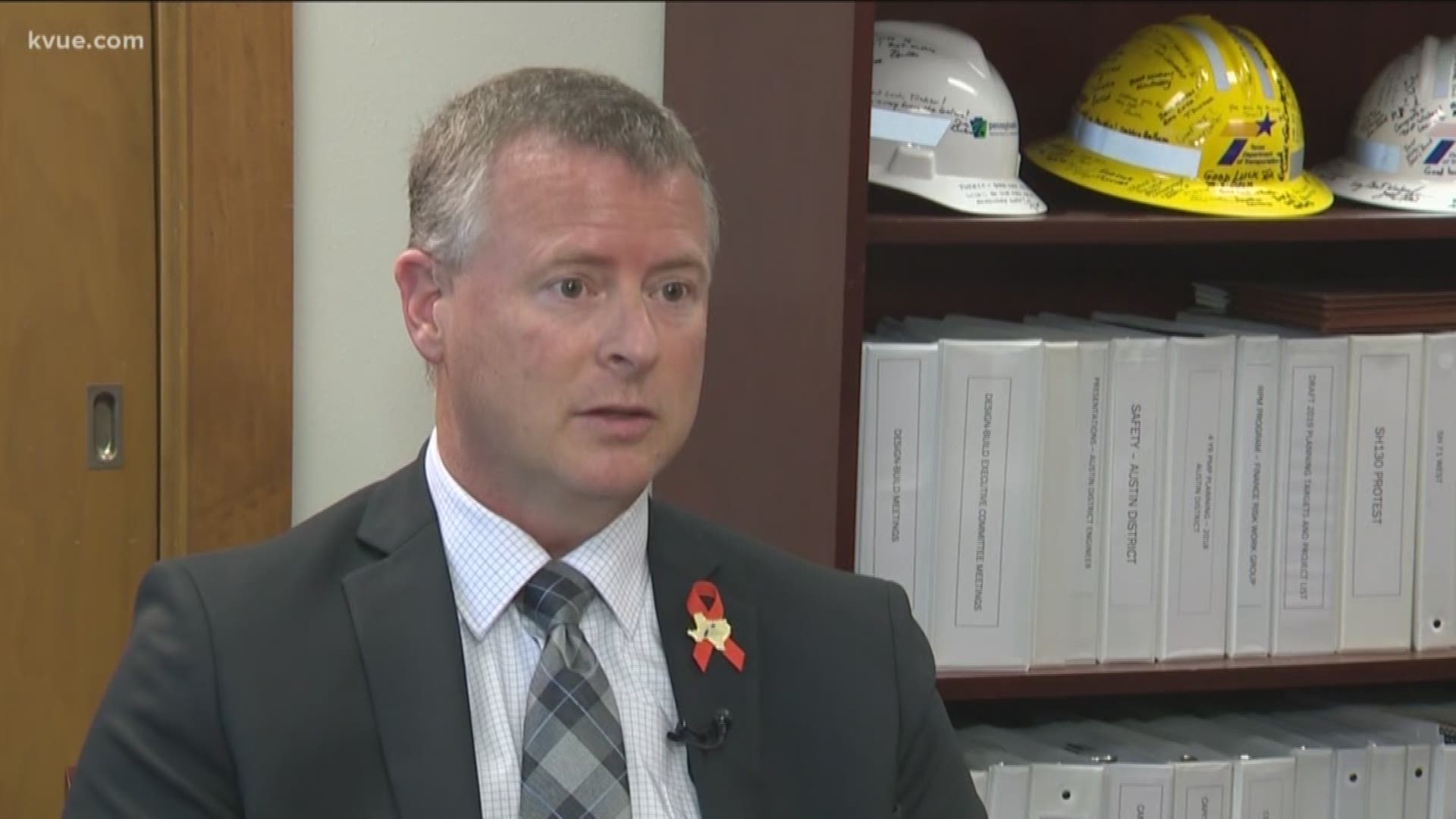AUSTIN, Texas — The Texas Department of Transportation (TxDOT) is like a lot of things in Central Texas – trying to keep up with the growth in the region.
Tucker Ferguson became the new district engineer in 2019, after an eight-year stint in Beaumont and previous experience working for the Pennsylvania Department of Transportation.
“It's very obvious that this is a region that is growing like crazy,” Ferguson told KVUE this week. “You can see the construction happening – residential, industrial, commercial – it's construction everywhere.”
Ferguson said TxDOT is trying to do what it can to keep up with the transportation system, including expanding highways. But that’s not the only solution to increasing congestion the agency is looking at.
“The expansion of highways is one of the solutions, but we just don't have enough money to relieve congestion by expanding highways only,” Ferguson said.
Other solutions include ridesharing, transit, telecommuting and more to help relieve some of the rush hour traffic, he said.
Improving I-35
Another big project Ferguson has to focus on is the improvements to the Interstate Highway 35 Capital Express project.
“I-35 is the is the backbone of the State of Texas. And many, many people call it the Main Street of Texas,” Ferguson said.
Some improvements include changing ramp configurations to increase traffic flow, adding diverging diamonds to various intersections and creating turnarounds under bridges to help traffic move more smoothly.
The Capital Express project is broken into three sections: north, central and south. The north and south sections already have funding. But the central section, which is the most expensive, still doesn’t.
“I-35 is already a high priority, but that large of a project for that amount of money would take a large chunk of the statewide number,” Ferguson said.
In 2019, Ferguson said the State spent about $10 billion on all construction projects, which means this project would take up about half of the statewide number.
RELATED:
It would be the first major expansion of I-35 in this area since about 1974, he said.
Part of the reason the cost will be so much is because the highway can’t be expanded through the downtown area. Instead, crews would have to dig and create tunnels.
Safety
TxDOT is continuing its campaign to "End the Streak."
Dozens of fatalities have already happened on Austin roadways in 2020, and hundreds have happened statewide.
“All of the projects that we do have a safety theme in mind, looking to improve safety,” Ferguson said. “We look at the engineering piece of it to see if there's something we can do, but also the educational piece to make sure people are paying attention.”
RELATED:
Things like diverging diamonds and roundabouts are some of the solutions TxDOT uses to improve safety, he said.
The next 20 years
“There may be future opportunities to expand other highways too, based on the growth patterns of where industrial or residential growth is,” Ferguson said. “And we'll continue working with our planning partners here in the capital region to look at those projects and those opportunities.”
The agency is also paying close attention to other methods of transportation, like scooters and self-driving vehicles.
RELATED:
“Whatever project we develop, we need to make sure that we are accommodating those different types of modes,” Ferguson said. There's a vehicle-to-vehicle communication that they would communicate with each other to make sure that they're operating in a safe manner … but there's also vehicle-to-infrastructure communication that we may be incorporating sensors into our lanes or traffic signs to make sure that vehicle communications can communicate with our infrastructure as well.”
It’s not yet clear when any of that type of technology could be added to Texas – or Austin – highways, but a TxDOT research group keeps close tabs on new developments.
“I think the reputation of Austin would make it the perfect place for having some of those test tracks or technology testbeds,” Ferguson said.
PEOPLE ARE ALSO READING:

